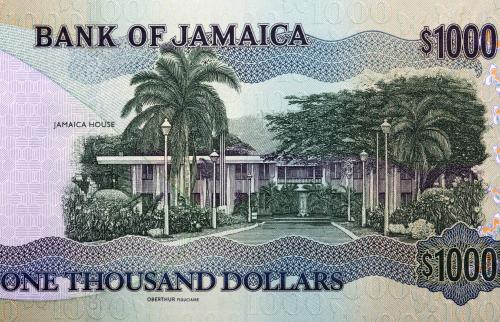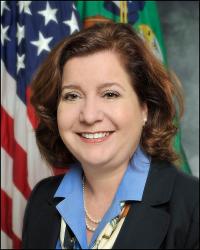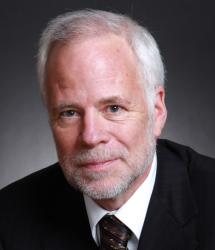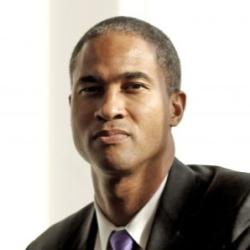Many countries around the world have faced harrowing debt burdens, and reducing the national debt is usually a lasting challenge. Jamaica is one of the few exceptions to the rule. In just five years, the small island nation reduced its debt-to-GDP ratio by 40 percentage points, something only a handful of other countries have done in that time frame. On this episode of the BPEA podcast, Peter Blair Henry of Stanford and Barry Eichengreen of UC Berkeley join Brookings Senior Fellow Gian Maria Milesi-Ferretti to discuss their new BPEA paper, “Sustained debt reduction: The Jamaica exception,” which explores the unique factors that enabled Jamaica’s success and lessons for other countries with high debt.
Transcript
[music]
EBERLY: I’m Jan Eberly, the James R. and Helen D. Russell Professor of Finance at Northwestern University.
STEINSSON: And I’m Jón Steinsson, Chancellor’s Professor of Economics at the University of California, Berkeley.
EBERLY: We’re the co-editors of the Brookings Papers on Economic Activity, a semiannual academic conference and journal that pairs rigorous research and real-time policy analysis to address the most urgent economic challenges of the day.
STEINSSON: And this is the Brookings Podcast on Economic Activity, where we share conversations with leading economists on the research they do and how it will affect economic policy.
EBERLY: Thank you all for tuning into this first episode of season four of the BPEA podcast. Jón and I are very excited to be back hosting the show and talking about this fascinating new economic policy research.
STEINSSON: Yeah, thank you all and welcome. The topics this season include: the evolution of banking over the past quarter century; why people dislike inflation so much; the impact of vaccines and behavioral responses during the COVID-19 pandemic; how business cycles have become more uniform within the U.S.; and a lot more.
EBERLY: Yeah, it’s a great set of papers and the conversations this season are sure to be illuminating. So, let’s jump into our first discussion, which will center on a new BPEA paper by Serkan Arslanalp of the International Monetary Fund, Barry Eichengreen of the University of California, Berkeley, and Peter Blair Henry of Stanford University, titled “Public Debt Consolidation: The Jamaica Exception.” Peter and Barry will join Brookings Senior Fellow Gian Maria Milesi-Ferretti to discuss their research.
Many countries have faced the challenge of trying to bring down fiscal deficits, that is, to reduce the gap between revenue and spending. But for countries with high levels of debt, the challenge is even more daunting. Bringing down debt often requires international intervention or negotiations between lenders and the borrowing country, and eventually running budget surpluses to pay down the remaining debt. There are not too many success stories, but this paper focuses on an impressive one. Jamaica brought their public debt down from 144 percent of GDP to 72 percent of GDP in just the last 10 years.
In some ways, the case is special, but it is instructive to see what it took and how Jamaica brought its debt down the old-fashioned way and still maintained public support and political stability.
STEINSSON: Yeah, and Jamaica was able to do this without the tailwinds of particularly favorable R minus G differentials. Reading the paper, I was struck by the importance of consensus building across the political spectrum and the broad involvement of various social partners in the policymaking process. These are, of course, really hard things to achieve, which is why Jamaica’s experience is so rare. But it’s important to highlight and learn from cases like this that manage to achieve rare success.
EBERLY: And with that, let’s hand it over to Gian Maria.
MILESI-FERRETTI: Well, thanks, Jan and Jón. And welcome, Peter. Thanks for joining us.
HENRY: Thank you Gian Maria. It’s good to be with you.
MILESI-FERRETTI: And welcome, Barry. Thanks for joining us.
EICHENGREEN: Likewise.
MILESI-FERRETTI: So, I will start, with a question for Peter. Why Jamaica? Can you briefly explain how government debt got so high and then how it came down?
HENRY: Why Jamaica is a good question, and it’s important to understand that when Jamaica became an independent country in 1962, it had a very modest debt, something like 20% of GDP. And the reason why Jamaica maintained a modest debt as a fraction of GDP for really the first decade or so of its life as an independent country is because there was consensus among the two major political parties, the People’s National Party, referred to as the PNP, and the Jamaican Labor Party, referred to as the JLP.
And the consensus was that Jamaica was very dependent on foreign capital for its growth—so, investment in the bauxite industry is very important—And so, that meant that, foreign investors needed to be kept confident, that the country was in a good economic position. So, that required fiscal stability. So, there were modest fiscal deficits. There was agreement on that.
And there was also an agreement that any debts that there were would not be monetized, and inflation and finance was not going to be resorted to as a means of financing any deficits.
So, inflation was low. Deficits were low. And that was the consensus around which the economy was built, along with a general agreement on openness and capitalist policies.
But all was not well, because Jamaica had great income inequality and wealth inequality as a function of its history as a former colony, former slave plantation and colony as well. And so, there was a lot of inequality, a lot of very high unemployment, particularly urban unemployment. And was widely seen as a country where there was great variance in opportunity depending on whether you were a member of the upper class—the ruling class, roughly speaking, the white business class—or the middle-class browns or the lower-class Blacks.
And so, there was a lot of social discontent. And so, when Michael Manley ran for prime minister, the leadership of the party in 1972, the consensus began to break down as he had a great vision for uniting the country and reducing income inequality. But advocated for the much greater role for the government in the economy.
And so, just to fast forward, when the PNP, when Michael Manley, Michael Manley won that election in 1972, at the time public spending as a fraction of GDP was around a fifth of GDP. By the middle of Michael Manley’s second term in 1977, government spending was about 45% of GDP. And fiscal deficits went from being in the low single digits to, at that time, in 1977 or so, being about 15% of GDP. And so, the debt was escalating throughout the 1970s.
Michael Manley also took a very strong sort of rhetorical approach to advocating for his policies even though the economy was doing quite poorly during the ‘70s and growth was contracting, which was also leading to the rise in the debt. And, you know, Michael Manley made a famous speech that I can remember, being a child growing up in Jamaica at the time, where he basically said, if you don’t like my policies there are five flights a day to Miami.
And many people took Manley at his word. My parents included. Basically he said, Jamaica has no room for millionaires. My parents weren’t seeking to be millionaires. They were scientists. But life became very hard because there were also policies that restricted imports, restricted access to foreign exchange. So, it became harder to get equipment if you were a scientist. Hard to run a business if you’re a businessman. And the rhetoric that Manley used certainly didn’t help.
And Jamaica just went into a downward spiral. The debt rose by the time Manley lost at the end of his second term in the election, debt was well over 100% of GDP. Jamaica brought the debt down with the change of government in the 1980s. But financial crisis in the 1990s again led to an escalation of the debt due to lax regulatory policy.
And so, when Jamaica entered the early 2000s, debt was high growth was low, and the country was really in a very bad way until the events that we talk about in the paper starting in 2013 where the, or roughly 2012 when the debt began to reverse course.
MILESI-FERRETTI: Fascinating. Lots of intersection of political and economic factors here. And I’ll switch now to a question for Barry, just to put things in an international context. How are really reductions of government debt of this order of magnitude at all common?
EICHENGREEN: That’s an easy question to answer, Gian Maria. They are exceedingly uncommon. The motivation for the paper, in part, was that along with our third coauthor, Serkan Arslanalp, he and I presented a paper at the Kansas City Fed’s Jackson Hole conference in the summer of 2023 where we argued that sharp debt reductions where debts are cut by 40, 50, 60, 70% of GDP are almost unheard of. With the implication that countries will have to live with the high levels of debt that they inherited from a global financial crisis, COVID, et cetera.
And a member of the audience, Peter Henry, raised his hand and said, what about my country of birth, Jamaica? And here we are today. Jamaica is one of an exceedingly small handful of countries that have reduced their debt-to-GDP ratios by 40 percentage points in a span of five years. That’s what Jamaica did. Between 2013 and 2018 it reduced its debt ratio from about a 150% of GDP to 100% of GDP, and that debt ratio has continued to fall since then.
If you look at all emerging markets and developing countries for which we have data since the turn of the century, since Year 2000, we find exactly five countries, including Jamaica, that have reduced their debt-to-GDP ratios by 40 percentage points in five years. The others are Bulgaria, Georgia, Indonesia, and Lebanon toward the beginning of the century. And, Jamaica’s case, as I said, is starts in 2013 or so. And Jamaica’s all by its lonesome in terms of having achieved that, mainly by running big budget surpluses over the debt reduction period.
MILESI-FERRETTI: Thank you, Barry. I was going to ask you that, because indeed, in all the other countries you mention, the growth in nominal GDP was much higher than in Jamaica. And clearly, when the denominator rises fast, it is easier for a debt-to-GDP ratio to adjust.
And I was going to follow up exactly with this question. And how did Jamaica do it? What was the role that the various contributors to their dynamics played? So, did economic growth play a role, or was this mainly a major fiscal effort? That in a sense, you already gave us the bottom line, but I’m curious to hear a little bit more about it from either of you or both of you.
EICHENGREEN: Well, I’m happy to elaborate a little bit. Serkan and I looked at a broad range of countries, and in that earlier paper found that strong economic growth, to which you just alluded, and a decline in political polarization, which was the subtext of Peter’s earlier remarks, were two of the most robust determinants of debt reduction episodes. Jamaica stands out, therefore, by having one of those preconditions in place, the decline in political polarization, but not the other one, not strong economic growth.
So, economic growth over the period averaged less than 1% per annum. Per capita GDP over the period barely rose at all. So, we can say Jamaica completed this remarkable achievement almost in the absence of economic growth, without strong support from economic growth. It ran primary budget surpluses. So, to remind ourselves, the primary budget is the budget net of interest payments. It ran primary budget surpluses on the order of 7 or 8% of GDP, which is quite a remarkable achievement in and of itself. But Jamaica did it year after year after year, even more remarkably. So, that points to political underpinnings being at least as important as economic underpinnings.
MILESI-FERRETTI: Indeed, I had the privilege at the time of being the reviewer of the IMF program on Jamaica in 2012 when the program was being negotiated. And I vividly remember the widespread skepticism on the likelihood of success, which made the whole negotiation process, even with the other international organizations alongside the IMF, quite complicated. So, it’s clear that the odds were not in favor of such a fantastic achievement ex post.
So, I’m going to follow up asking Peter, in his view, what were the factors that enabled Jamaica to succeed? How did they maintain political support through a long period with changes in government in between? And did the international environment, did foreign lenders, also play a role? What is your assessment of this? You lived this in person, with close contacts with those in charge. And so, we are really eager to hear your perspective on this.
HENRY: Thank you. And let me add some color to what Barry said. Barry put his finger on a really critical issue, which is the politics and polarization. You know, in his work with Serkan he’s made it very clear how difficult political polarization makes it to sustainably reduce public debt. And just to understand just the enormity of what was done in Jamaica, one has to understand the history and the context in which this dramatic change, of course, took place.
So, just to give you a just a quick sense about polarization in Jamaica. There’s a new movie out called One Love about the life of Bob Marley. So, in 1979, the year before Manley was actually voted out of office, there was actually a peace-love concert that was held in Jamaica with the goal of actually reducing the political violence in Jamaica that was so rampant in the 1970s, in large part because of this deep inequality in the society and frankly the rhetoric of the politicians around election time.
If you were living in Jamaica in the 1970s, as I was—and I was from a family that was just fine—but if you were living in the garrisons in inner city Kingston, whether the PNP or the JLP came to power was seen as, frankly, a matter of survival for your family. Because, as Barry was saying earlier, there was no economic growth in Jamaica. Jamaica’s economy contracted for eight straight years under Michael Manley.
And so, the stakes were really high. And because the stakes are so high, in the run up to the 1980 election, almost 800 people were killed. This is a vibrant democracy. But this is just that the stakes were so high amongst competing factions that folks saw this as a matter of survival.
So, you have to understand that’s the context, in which Jamaican leaders—fast forward now to circa 2010—had to figure out how do we get this debt down? How do we build the infrastructure, if you put it that way, to reduce the debt? There were really three critical elements to how they actually got that done. Adoption of fiscal rules, which we’ll get into. I’m sure Barry will have more to say about that as well. Acceptance of legitimacy of the goals of those fiscal rules. A sense that the burden of adjustment is going to be fairly shared. And then there’s accountability. How do you actually hold the government accountable for hitting the fiscal goals?
But as a precondition for all of that, to have adoption, acceptance, and accountability, you have to reduce polarization. And so, the way in which Jamaica, in the early 2010s, began to address the issues of adoption, acceptance, accountability really flowed from the fact that it had begun, starting in 1979, trying to address political polarization. During this ghastly time of these 800 election deaths, Jamaica began building a series of what were called social partnerships, which are basically coalitions of government officials, members of civil society, business leaders, and other members of Jamaican society to have open dialogue about the problems facing the country, and to try to achieve some shared understanding of what was needed to be done to address these problems.
So, with the paper we go into great detail about giving some examples of these partnerships. But to fast forward to 2012, when Jamaica actually began to really reduce its debt, the key thing was using this history of social partnerships as a means of creating acceptance around the fiscal rules that were first introduced in 2010. And I would say unsuccessfully introduced in 2010, and I’m sure Barry will have more to say about the failure of fiscal rules, not only in Jamaica, but in other places at various points in time.
And there was an adoption of fiscal rules in 2010, but they didn’t have any bite. And so, at the time they were adopted in 2010, under at that time the JLP, another IMF program went off track. It was probably the 12th consecutive IMF program in Jamaica’s history since the ‘70s that went off track.
And then in 2012, a new government came in and Jamaica’s back was against the wall. And as you mentioned, you were deputy director, I think, in the Western Hemisphere at the time. I was, frankly, in pretty regular conversation with Peter Phillips, who was the finance minister. And there was a clear understanding of what needed to be done.
And the way in which the debt began to come down was that there was a formulation of a group called the Economic Policy Oversight Committee. Right? Which the Economic Policy Oversight Committee was critical for putting in place an enforcement mechanism to make sure that the fiscal rules which had been adopted in 2010 and then were modified in 2012, approximately, to become more forceful, would actually be enforced. Right?
And a big part of what needed to happen for the debt trajectory to begin to come down, and for Jamaica to receive some external assistance from the International Monetary Fund, was that there had to be an agreement of some rescheduling of domestic debt. But in order for that to happen, the domestic banks had to agree to participate in what was essentially the second debt exchange. And the banks basically said, we’re only going to do this, we’re only going to participate for the second time because we don’t want to keep having to do this. If the government, if you, Peter Phillips and the Ministry of Finance, give us some assurance that you’re going to be serious this time. We basically want to put you into receivership and monitor what happens.
And essentially Peter Phillips said, I don’t have a problem with that. But if I’m going to give you that kind of oversight, I have got to involve all of society. And the history of social partnerships in Jamaica essentially gave a model that was in some sense on the shelf that the government, Finance Minister Peter Phillips, could actually pull off the shelf and use as a model to say, okay, this is how we’re going to do it. We’re going to involve not just the CEOs of the banks, but we’re going to involve the unions and broader members of civil society. And that’s how you got the acceptance. Because there was this history of social partnership and that model was used to bring everybody into the conversation.
And then the accountability, which is critical, of course, was that you had all these bankers in conjunction with the IMF monitoring the program and reporting out to the people every quarter what was going on, what was the progress. And if there was slippage, where’s the slippage.
So, the adoption of fiscal rules, the broad acceptance of the legitimacy of those fiscal rules, and the how the burden was going to be shared, and then very importantly an enforcement mechanism and accountability through the Economic Policy Oversight Committee.
MILESI-FERRETTI: Well, this is fascinating. Thank you. Peter. There is actually another pretty extraordinary element to the uniqueness of the Jamaica experience, which is that there was no haircut on foreign investors. That relatively modest, but still significant restructuring, rescheduling of debt on the domestic front was hitting domestic investors and not international investors. And still, as you say, the conditions were put in place for this to hold.
Barry, I don’t know whether you want to add something on the rules? I have just one last question after this.
EICHENGREEN: Yeah, I would add a few remarks. The way I think about constellation of factors that Peter described is in terms of the word “ownership.” So, everybody talks about ownership of an adjustment program. Nobody ever explains exactly what they mean. So, we try to put some flesh on those skeletal bones, if you will, and explain that ownership requires transparency and a set of clear but flexible fiscal rules—enhanced transparency.
And then it requires a social partnership, or what some political scientists refer to as a system of democratic corporatism, where the different stakeholders in a democracy get together, either physically or metaphorically around a table, and they verify that the authorities are doing what they said they would do, they assure one another that everybody is sharing in the burden of adjustment. If there are stakeholders with specific concerns, like the bankers, they are represented as well.
So, our understanding of this experience is that both elements were needed, both the well-designed fiscal rules and the National Partnership agreement in the form of the Economic Program Oversight Committee. And that this kind of sustained debt reduction would not have been possible in the absence of either of them.
So, that raises the question of whether the lessons from Jamaica generalize to other countries. If that’s your final question, Gian Maria, I won’t answer now. I’ll let you pose it to whomever you want, but I but I think you can sense that the answer there is yes and no.
MILESI-FERRETTI: Indeed, that this is where I was going. And I’m eager to hear anything that you want to add on this issue?
EICHENGREEN: I would add that I think, in principle, other countries could adopt this recipe of well-designed fiscal rules and democratic corporatism, if you will. But at the same time, Jamaica was able to do so because of its unique history that, as Peter described, that starting in 1979, 1980, it established an independent electoral committee on which all the relevant political stakeholders were involved. And it established kind of a national planning committee to map out an economic strategy. And finally, this fiscally oriented committee in 2012, 2013.
That trajectory, that history was unique to Jamaica. And in some sense, countries lacking it can’t just jump to the end of the line without going through this what in Jamaica’s case was four-decade-long process.
MILESI-FERRETTI: Thank you. Barry. Peter, do you want to add your final thoughts on this?
HENRY: I agree with what Barry said. And I would just emphasize that I was one of the biggest skeptics about Jamaica’s ability to do this. In 2009, I wrote a paper with Conrad Miller in the American Economic Review Papers and Proceedings comparing Jamaica to Barbados, which is one of the countries that Barry was implicitly alluding to. And Barbados had very successfully for a while reduced their debt in the early 1990s. And I, Conrad and I, in that paper argued that Jamaica just didn’t have the discipline, the combination of elements that we described—adoption rules, acceptance, and accountability—to make something like that happen.
But Jamaica did it. And Jamaica, I think a very important lesson is leadership matters as well as having rules and systems in place. And so, in particular, I would point to—again, this is going back to history—when Michael Manley came to power in his second tenure, in office in the late 1980s, he brought the temperature down by basically acknowledging mistakes that he had made from the economic policy perspective in the past, which to Barry’s point helped to continue to solidify a new tradition of consensus building. Right?
And so, whereas other countries can’t replicate Jamaica’s history, it is important to realize that the leadership plays an important role. And in particular, I would point to Peter Phillips in 2013 and Nigel Clarke continuing Peter Phillips’s policies when the government switched in 2016. But it was Peter Phillips who in 2013 basically with a deep knowledge of Jamaican history, because he’s actually a sociologist by training, said there’s a way to actually take this model off the shelf of a social partnership and use it to deploy our history of social partnership in a way that allows us to build this economic policy oversight committee that can give us accountability to the financial sector and give us acceptance to the broader society.
And so, the point we make in the paper is that institutions are endogenous. Right? And so, countries can change. The way in which other countries other than Jamaica are going to have to change will depend on their on their own unique history. But leadership also plays a very critical role as was pointed out in work by the Growth Commission; they did some important work on growth in 2008.
If you look at the countries that have been able to have sustained high rates of growth in the post-World War II era, one of the key five characteristics that the growth of work actually identified, in addition to macro stability and openness to trade, is leadership. And so, one of the lessons here is that for sustained debt reduction, as in sustained growth, leadership may be a very critical ingredient.
MILESI-FERRETTI: Well, I want to warmly thank, Peter and Barry. This was absolutely fascinating. And it’s also relatively unusual in our conferences to have papers on success stories as opposed to crisis. And, especially considering this was literally against all odds, I think it is a particularly refreshing story to hear. And we are really grateful to the three of you for having undertaken this endeavor and gone in so much detail and depth on the underlying causes of this unlikely success story.
[music]
So, thank you very much and we look forward to reading this in great detail. Thank you.
HENRY: Thank you, Gian Maria. It was great pleasure to be with you. And great to be with you, Barry.
EICHENGREEN: And good to be with you both.
STEINSSON: Once again, I’m Jón Steinsson.
EBERLY: And I’m Jan Eberly.
STEINSSON: And this has been the Brookings Podcast on Economic Activity. Thank you to our guests for this great conversation and be sure to subscribe to get notifications about new releases of this podcast.
EBERLY: The Brookings Podcast on Economic Activity is produced by the Brookings Podcast Network. Learn more about this and our other podcasts at Brookings dot edu slash Podcasts. Send feedback to Podcasts at Brookings dot edu and find out more about the Brookings Papers on Economic Activity online at Brookings dot edu slash BPEA.
STEINSSON: Thanks to the team that makes this podcast possible, including Kuwilileni Hauwanga, supervising producer; Fred Dews, producer; Gastón Reboredo, audio engineer; with support from Shannon Meraw and Chris Miller in Economic Studies at Brookings. Show Art was designed by Katie Merris at Brookings and promotional support comes from our colleagues in Brookings Communications.
- Listen to the Brookings Podcast on Economic Activity on Apple, Spotify, or wherever you like to get podcasts.
- Learn about other Brookings podcasts from the Brookings Podcast Network.
- Sign up for the podcasts newsletter for occasional updates on featured episodes and new shows.
- Send feedback email to [email protected].
The Brookings Institution is committed to quality, independence, and impact.
We are supported by a diverse array of funders. In line with our values and policies, each Brookings publication represents the sole views of its author(s).










Commentary
PodcastHow did Jamaica halve its debt in 10 years?
April 11, 2024
Listen on
Brookings Podcast on Economic Activity